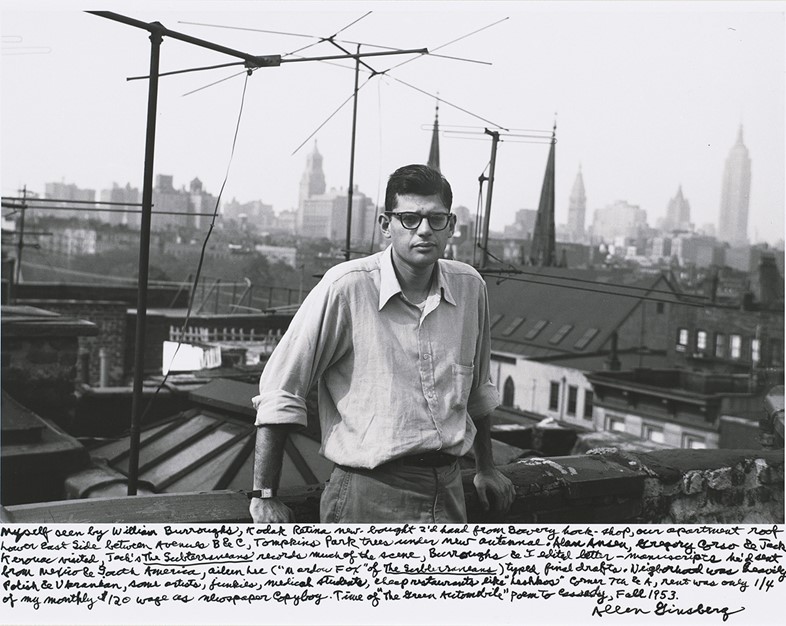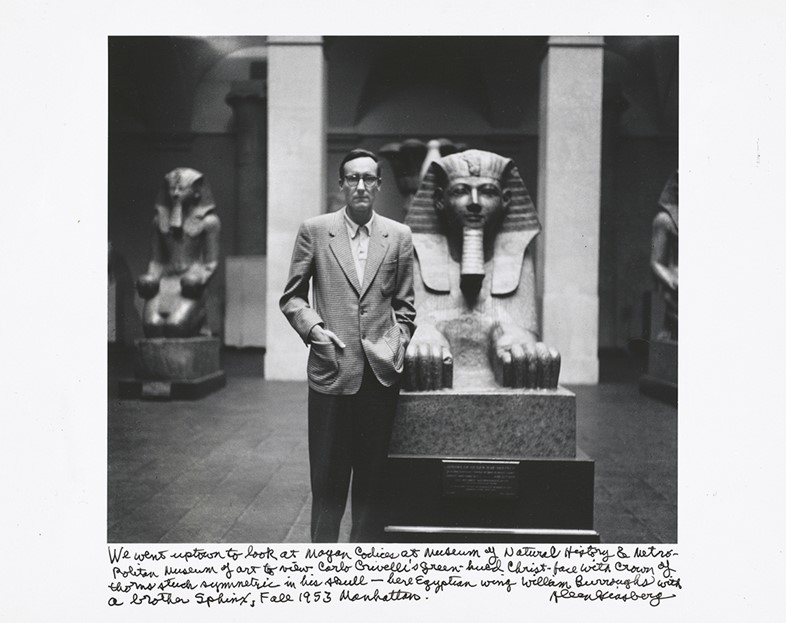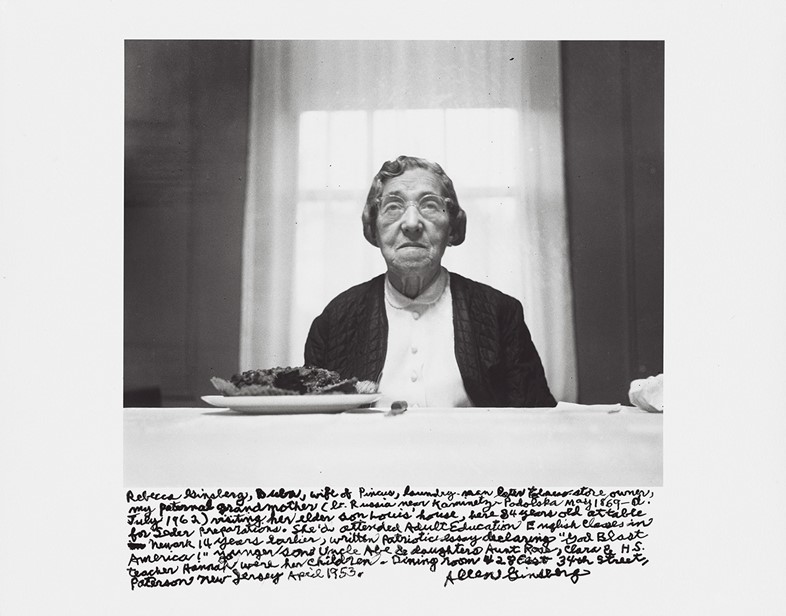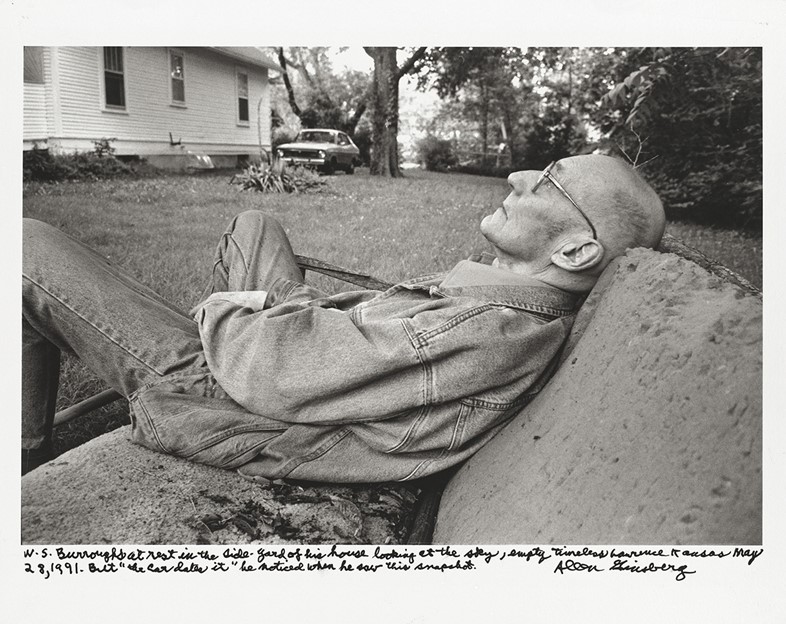Exploring the day-to-day life of the Beat pioneers via Allen Ginsberg's brilliant photographs
Allen Ginsberg was in many ways the beating heart of the Beat Generation. The group’s most vocal leader, he was ambitious and driven, and utterly convinced that he and his cohorts – William Burroughs, Jack Kerouac et al – would achieve “the most individual, uninfluenced, unrepressed, uninhibited expression of art,” in contradiction to their insipid contemporaries. The Howl poet was the first to submit Kerouac’s writing to publishers in the early 50s, and was largely responsible for the publication of Burroughs’ semi-autobiographical work, Junkie, in 1953. In the same year, while living in New York, he purchased a secondhand Kodak Retina camera and began the skillful visual documentation of his daily life and the companions that punctuated it, a pastime that would preoccupy him for the next 10 years – the definitive period of the Beat movement.
Thereafter, however, the majority of these brilliantly intimate images lay untouched among Ginsberg’s papers. When he finally recovered them in the 1980s, he noted nostalgically, “The poignancy of a photograph comes from looking back to a fleeting moment in a floating world,” and elected to reprint them, inscribing them by hand with insightful reflections of the moments they capture. The images’ rediscovery also inspired Ginsberg to take up his camera once again and he set out to record his friends and acquaintances, new and old, with renewed vigour.
“The poignancy of a photograph comes from looking back to a fleeting moment in a floating world”
An eclectic range of Ginsberg’s decade-spanning images were displayed in Washington in 2010 and were accompanied by a wonderful catalogue entitled Beat Memories: The Photographs of Allen Ginsberg. The book is now available in a newly published paperback edition by Prestel and to celebrate we present a selection of some of our favourite images and captions. From a gangly William Burroughs (at that time engaged in an affair with Ginsberg) pictured alongside a “brother Sphinx” in a New York museum, to a brooding Jack Kerouac puffing on a cigarette, these “certain moments in eternity,” (in Ginsberg’s words) will prove a captivating delight for Beat and photography fanatics alike.
(Above) “Jack Kerouac, railroad brakeman’s rule-book in pocket, couch-pillows airing on fire-escape three flights up overlooking backyard clothes-lines south. He’d already published The Town & the City and completed a treasury of half-dozen unprinted classic volumes including On the Road, Visions of Cody, Doctor Sax, early books of Blues and Dreams & had begun The Subterraneans’ adventurous love affair with Alene Lee, “Mardou Fox”. Alene typed for W.S. Burroughs then in residence editing Yage Letters and Queer mss., unpublishable that decade, censorship ruled. I scribed “The Green Automobile,” Gregory Corso visited that season, 206 East 7th Street near Tompkins Park, Manhattan, probably September 1953.”

“Myself seen by William Burroughs, Kodak Retina new-bought 2’d hand from Bowery hock-shop, our apartment roof Lower East Side between Avenues B & C, Tompkins Park trees under new antennae. Alan Ansen, Gregory Corso & Jack Kerouac visited, Jack’s The Subterraneans records much of the scene, Burroughs & I edited letter-manuscripts he’d sent from Mexico & South America, Alene Lee (“Mardou Fox” of The Subterraneans) typed final drafts. Neighbourhood was heavily Polish & Ukranian, some artists, junkies, medical students, cheap restaurants like “Leshkos” corner 7th & A, rent was only 1/4 of my monthly $120 wage as newspaper copyboy. Time of “The Green Automobile” poem to Cassady, Fall 1953.”

“William S. Burroughs looking serious, sad lover’s eyes, afternoon light in window, cover of just-published Junkie propped in shadow above right shoulder, Japanese kite against Lower East Side hot water flat’s old wallpaper. He’d come up from South America & Mexico to stay with me editing Yage Letters and Queer manuscripts. New York Fall 1953.”

“We went uptown to look at Mayan Codices at Museum of Natural History & Metropolitan Museum of Art to view Carlo Crivelli’s green-hued Christ-face with crown of thorns stuck symmetric in his skull – here Egyptian wing William Burroughs with a brother Sphinx, Fall 1953 Manhattan.”

“Rebecca Ginsberg, Buba, wife of Pincus, laundry-man later tobacco store owner, my paternal grandmother (b. Russia near Kaminetz-Podolska May 1869–d. July 1962) visiting her elder son Louis’ house. Here 84 years old at table for Seder preparations. She’d attended Adult Education English classes in Newark 14 years earlier, written patriotic essay declaring “God Blast America!” Younger son Uncle Abe & daughters Aunt Rose, Clara and H.S. teacher Hannah were her children. Dining room 428 East 34th Street, Paterson New Jersey April 1953.”

“W.S. Burroughs at rest in the side-yard of his house looking at the sky, empty timeless Lawrence Kansas May 28, 1991. But ‘the car dates it’ he noticed when he saw this snapshot.”
Beat Memories: The Photographs of Allen Ginsberg is published by Prestel and is available now.
